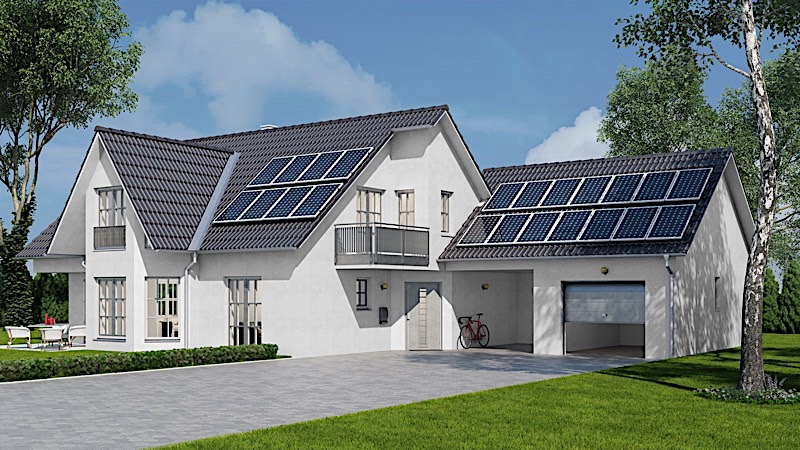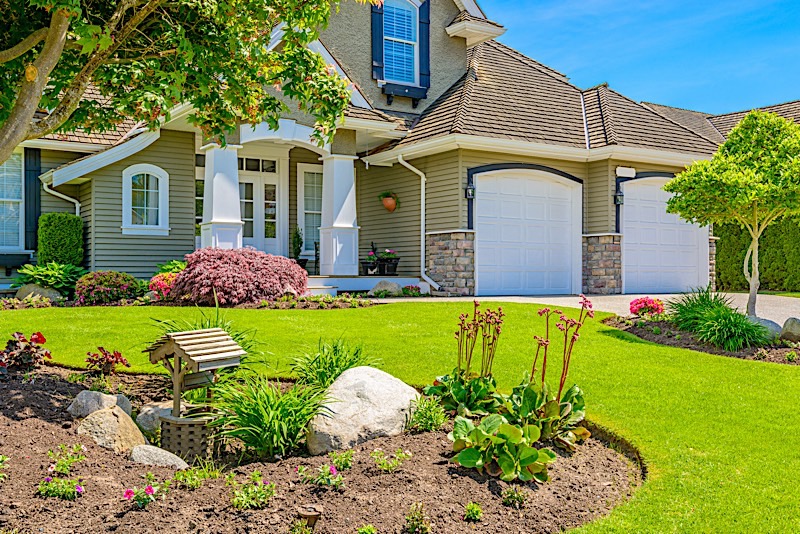Green Home Improvements That Will Unlock Your Home’s True Value
By Than Merrill
Green home improvements have become synonymous with today’s most sought after houses, and for good reason. If properly certified, there is no reason to think a green home can’t simultaneously promote energy savings, water efficiency, reduction in carbon emissions, reduction in waste sent to landfills, improved indoor air quality, and the protection of natural resources. It’s worth noting, however, that green home improvements help more than those simply living in the properties themselves. Real estate investors have begun to take notice of the benefits associated with green home improvements as well. In fact, the right green home improvements can make a world of difference for the savvy real estate entrepreneur.
Buying a home with green home improvements represents an investment in your future, and the better green technology is becoming, the more prospective homeowners are starting to want it. That means homes with green features are nothing short of a commodity, and if you can offer prospective buyers the green technology they are looking for, there is no reason to believe you couldn’t increase the value of your home while simultaneously reducing your carbon foot print. It’s the definition of a win-win; you are able to sell your home at a higher price point and the buyer gets the features they want the most.
Green Home Improvements Can Pay Big Dividends

Let’s take a look at some of the biggest reasons real estate investors should consider implementing some green home improvements in their next deal:
Energy Efficiency: By definition, green homes are designed to be more energy efficient than their less advanced counterparts — no surprise there. However, few are aware of just how much more energy efficient truly green homes can be. LEED-certified homes, or those that have been certified by the United States Green Building Council, are actually designed to consume somewhere in the neighborhood of 30 to 60 percent less energy than homes that have yet to apply any green measures at all. Over the course of an entire year, using 30 to 60 percent less energy can result in an energy bill that is thousands of dollars less than standard homes. So while buyers may be willing to pay more up front for green features, they are confident they will be able to recoup some (if not all) of the costs over an extended period of time. As an investor, that means the right green home improvements can very easily contribute to your bottom line.
Desirability: Not surprisingly, energy efficient homes are more desirable than those void of green home improvements altogether. Outside of the huge amount they can save on energy bills every year, the right additions can significantly reduce your carbon footprint while simultaneously creating a healthier living environment. According to the U.S. Green Building Council, LEED residential units can dramatically improve the environmental health conditions of those living in green homes. All these things, and more, continue to make green homes much more desirable. In fact, consumers have placed LEED certification at the top of their wish lists — just behind staples like location and price. And, as I am sure you are already aware, healthy demand in today’s marketplace where inventory (or lack thereof) is still an issue can drive up asking prices. As an investor with an LEED-certified home, the laws of supply and demand suggest it’s within your right to increase your price point accordingly.
Timely & Profitable: Again, green homes sell for more money than comparable, conventional homes. At least that’s what real estate appraiser and author Sandra K. Adomatis couldn’t help but notice was taking place in Washington, D.C. According to Adomatis’ 2016 report, “What Is Green Worth?,” high-performing single family and multi-family homes with green features in Washington, D.C. will sell for 3.5 percent more than those without green features. It’s worth noting, however, that they are also capable of selling in a shorter period of time, which every investor knows holds significant value in and of itself. Shorter selling periods mean fewer holding costs, and ultimately more money in your pocket. What’s not to like?
Now that you are familiar with some of the more important reasons investors should strongly consider green home improvements, let’s examine how you can make them a reality. If for noting else, not all green home improvements are created equal. Here are a few of the home improvements I would expect your potential buyers to covet the most:
1. Solar Panels
Otherwise known as photovoltaic (PV) panels, solar panels are perhaps the most well-known green home improvements implemented in today’s houses. As their name would lead you to believe, solar panels capture photons from the sun and turn them into energy; energy you can use to power your home. They are expensive to install, but it’s entirely possible to recoup a lot of the initial cost at the time of a sale. Not unlike the same price adjustments you can make for typical upgrades, the U.S. Department of Energy suggests buyers are willing to pay a premium for homes with green home improvements like solar panels, sometimes upwards of $15,000 more.
2. Paint
When you think of green home improvements, I am willing to bet paint isn’t the first thing that comes to mind. However, certified green homes are not only energy efficient, they offer a healthy living arrangement. And whether you know it or not, paint can make a big difference in the air pollutants throughout a home. In a home that you are greenhabbing, you need to make sure that the paint you are using has very little to no VOC emissions. Fortunately, this is much easier now than it was 10 years ago. The majority of major paint brands offer low/no VOC options. If you want your home to be truly green, and to be able to market it that way, you had better make sure your paint passes the home inspection.
3. Landscaping
As perhaps the most overlooked aspect of green home improvements, landscaping is a major component of going green. There are several steps you can take to make your home greener on the outside while simultaneously increasing curb appeal. A programmable drip irrigation system will cut down drastically on water usage while still providing enough water for plants to flourish. Choose plants that are drought tolerant, native to the area, and perennial for even more environmental points. The key is to dramatically increase the amount of water you use to maintain the status quo. It’s also worth noting buyers will appreciate a yard that requires less maintenance.
Green home improvements are all the rage at the moment, and those investors who can capitalize on the trend will certainly be rewarded accordingly. Don’t let this opportunity pass you by. Start looking for the green home improvements your next rehab could use.